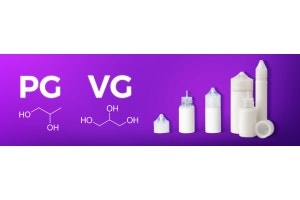Frequently Asked Questions About Vaping

There has been a lot of buzz lately about vaping, especially among young adults and teenagers. With the rise in popularity of e-cigarettes and vape pens, it’s important to separate facts from myths. This FAQ guide will cover some of the most common questions surrounding vape products and vaping.
What is Vaping?
Vaping is the act of inhaling and exhaling vapor produced by an electronic cigarette or similar device. These devices heat up a liquid (usually containing nicotine) into a vapor that can be inhaled. Vaping is often seen as an alternative to smoking traditional cigarettes.
Is Vaping Safer Than Smoking?
While vaping doesn’t involve burning tobacco like traditional smoking, it’s not entirely risk-free. Vaping still requires inhaling chemicals and particles, which can negatively affect health, and its long-term effects remain largely unknown. However, scientists estimate that exclusively using vaping products is about 95% less harmful than smoking cigarettes.
Can Vaping Help Me Quit Smoking?
There is some evidence that suggests vaping can help smokers quit traditional cigarettes. However, it’s important to note that e-cigarettes and vape pens still contain nicotine and can be addictive. It’s best to consult with a medical professional for assistance in quitting smoking.
Is Secondhand Vapor Harmful?
Exposure to secondhand vapor from vaping has been shown to have significantly lower levels of harmful chemicals compared to secondhand smoke from traditional cigarettes. However, there is still potential for harm, especially for those with respiratory conditions. It’s best to limit exposure to secondhand vapor.
Are There Any Regulations on Vaping?
The laws and regulations surrounding vaping vary by country and state. It is banned entirely in some places, while in others, it is heavily regulated. It’s essential to research the laws in your area before purchasing or using any vaping products.
Can Vaping Cause Popcorn Lung?
No, vaping does not cause popcorn lung (bronchiolitis obliterans), a rare illness associated with exposure to diacetyl, a chemical once used in flavoring products like microwave popcorn. In the past, some vape juices contained diacetyl, but most manufacturers have since removed it due to health concerns. Modern vape products are now subject to stricter regulations to ensure harmful ingredients like diacetyl are no longer used. While vaping still comes with health risks, the specific connection to popcorn lung has been largely debunked.
How Can I Reduce the Potential Risks of Vaping?
If you choose to vape, there are some steps you can take to reduce potential risks and adverse effects on your health. Make sure to purchase e-cigarettes and vape liquids from well-known and trusted brands. This can help ensure that the products are made with safe ingredients. Avoid DIY modifications of your device. Modifying or tinkering with your vaping device can increase the risk of malfunctions or harmful chemicals being released. You should also properly maintain and clean your device to prevent any build-up of harmful substances. Additionally, be mindful of the temperature settings when vaping to avoid inhaling harmful chemicals at high temperatures.
Is Vaping Addictive?
While vaping can be a helpful tool for those looking to quit smoking, it is important to note that e-cigarettes still contain nicotine, which is highly addictive. In fact, some studies have shown that the amount of nicotine in one Juul pod is equivalent to a pack of cigarettes. It’s essential to be aware of your nicotine intake and try to decrease it gradually. While vaping may have some potential risks and negative effects on health, it is generally considered to be a safer alternative to smoking traditional cigarettes. It’s important to research and understand the laws and regulations surrounding vaping in your area and take steps to reduce potential risks if you choose to vape.








